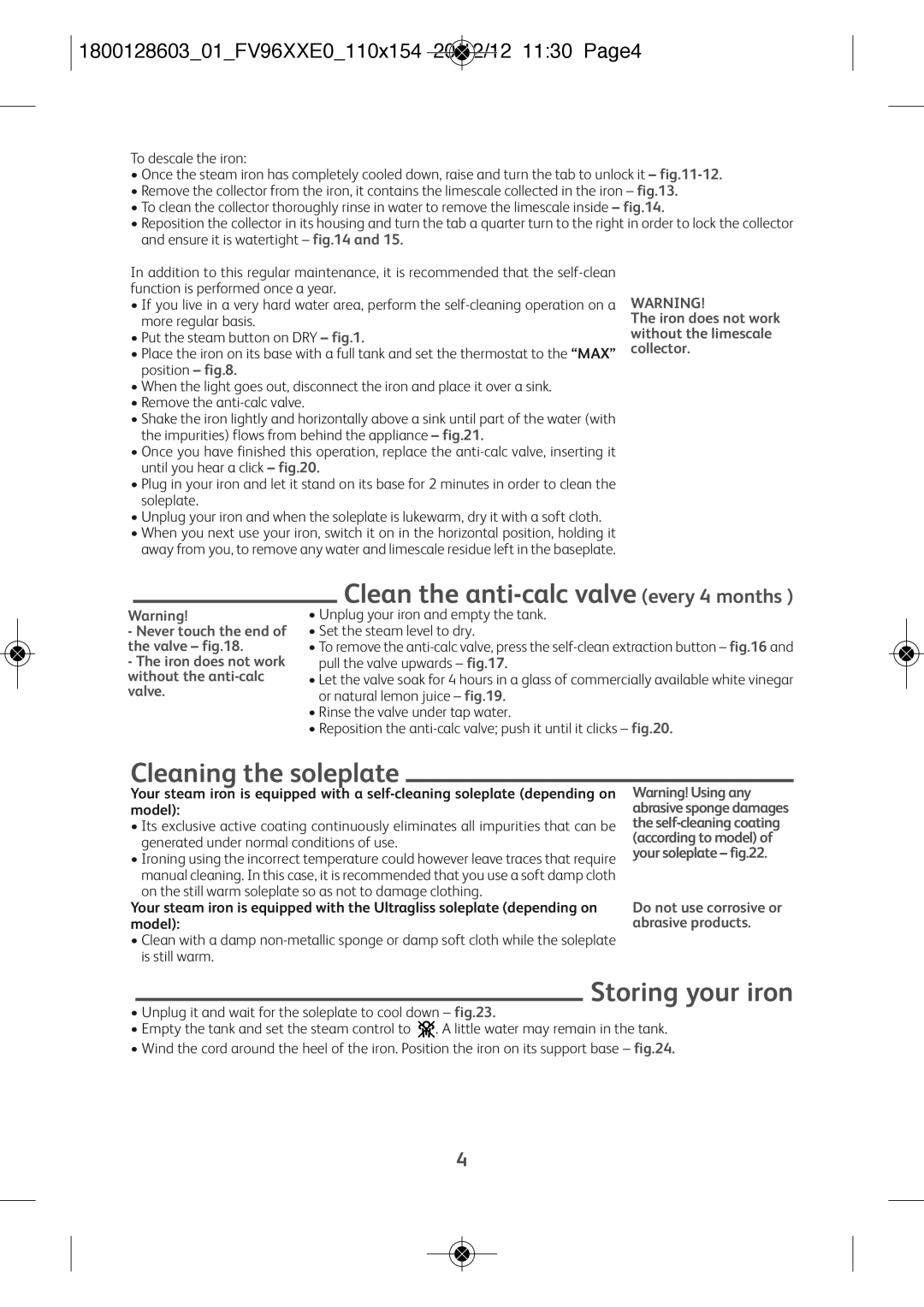
 1800128603_01_FV96XXE0_110X154 20/12/12 11:30 PAGE4
1800128603_01_FV96XXE0_110X154 20/12/12 11:30 PAGE4
To descale the iron:
•Once the steam iron has completely cooled down, raise and turn the tab to unlock it –
•Remove the collector from the iron, it contains the limescale collected in the iron – fig.13.
•To clean the collector thoroughly rinse in water to remove the limescale inside – fig.14.
•Reposition the collector in its housing and turn the tab a quarter turn to the right in order to lock the collector and ensure it is watertight – fig.14 and 15.
In addition to this regular maintenance, it is recommended that the
•If you live in a very hard water area, perform the
•Put the steam button on DRY – fig.1.
•Place the iron on its base with a full tank and set the thermostat to the “MAX” position – fig.8.
•When the light goes out, disconnect the iron and place it over a sink.
•Remove the
•Shake the iron lightly and horizontally above a sink until part of the water (with the impurities) flows from behind the appliance – fig.21.
•Once you have finished this operation, replace the
•Plug in your iron and let it stand on its base for 2 minutes in order to clean the soleplate.
•Unplug your iron and when the soleplate is lukewarm, dry it with a soft cloth.
•When you next use your iron, switch it on in the horizontal position, holding it away from you, to remove any water and limescale residue left in the baseplate.
WARNING!
The iron does not work without the limescale collector.
Warning!
-Never touch the end of the valve – fig.18.
-The iron does not work without the
Clean the anti-calc valve (every 4 months )
•Unplug your iron and empty the tank.
•Set the steam level to dry.
•To remove the
•Let the valve soak for 4 hours in a glass of commercially available white vinegar or natural lemon juice – fig.19.
•Rinse the valve under tap water.
•Reposition the
Cleaning the soleplate
Your steam iron is equipped with a
•Its exclusive active coating continuously eliminates all impurities that can be generated under normal conditions of use.
•Ironing using the incorrect temperature could however leave traces that require manual cleaning. In this case, it is recommended that you use a soft damp cloth
on the still warm soleplate so as not to damage clothing.
Your steam iron is equipped with the Ultragliss soleplate (depending on model):
•Clean with a damp
Warning! Using any abrasive sponge damages the
Do not use corrosive or abrasive products.
Storing your iron
•Unplug it and wait for the soleplate to cool down – fig.23.
•Empty the tank and set the steam control to ![]() . A little water may remain in the tank.
. A little water may remain in the tank.
•Wind the cord around the heel of the iron. Position the iron on its support base – fig.24.
4
